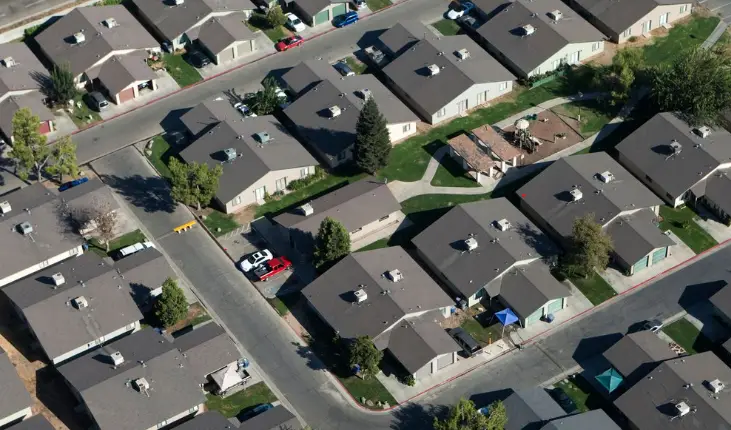Is san diego safe from earthquakes?
In general, San Diego is considered to be at a moderate risk for earthquakes. The most recent significant earthquake to hit the area was the 6.9-magnitude El Centro quake in 2010, which caused some damage but no fatalities.
Are there a lot of earthquakes in San Diego?
There are not a lot of earthquakes in San Diego. The last significant earthquake in the area was the Elsinore fault zone earthquake in 2010, which had a magnitude of 5.4. There have been a few small earthquakes since then, but nothing of significance.
Can a tsunami hit San Diego?
Yes, a tsunami can hit San Diego. In fact, there is evidence that a tsunami did hit San Diego in the year 1680. A tsunami is a large wave that is caused by an earthquake or other underwater disturbance. When a tsunami hits land, it can cause a lot of damage.
When was the last earthquake in San Diego?
The last earthquake in San Diego was on April 25, 2010. It was a magnitude 5.7 quake that struck at 3:40 p.m. about 10 miles northeast of the city. The quake was felt throughout San Diego and caused minor damage to buildings and roads. There were no reports of injuries or fatalities.
Is San Diego on a fault?
San Diego is not on a fault.
Is it safe to live in San Diego?
San Diego is a large city in California with a population of over 1.3 million people. The city is located on the coast of the Pacific Ocean and has a Mediterranean climate. The average high temperature in San Diego is 76 degrees Fahrenheit and the average low temperature is 62 degrees Fahrenheit. The city experiences an average of 10 days of rain per year. San Diego is considered a safe city to live in. The crime rate in San Diego is lower than the national average. The most common crimes in San Diego are property crimes such as burglary and theft. The violent crime rate in San Diego is also lower than the national average. The most common violent crimes in San Diego are aggravated assault and robbery.
San Diego is a large city with a population of over 1.3 million people. The city is located on the coast of the Pacific Ocean and has a Mediterranean climate. The average high temperature in San Diego is 76 degrees Fahrenheit and the average low temperature is 62 degrees Fahrenheit. The city experiences an average of 10 days of rain per year. San Diego is considered a safe city to live in. The crime rate in San Diego is lower than the national average. The most common crimes in San Diego are property crimes such as burglary and theft. The violent crime rate in San Diego is also lower than the national average. The most common violent crimes in San Diego are aggravated assault and robbery.
Will San Diego fall into the ocean?
No, San Diego will not fall into the ocean. The city is located on the coast of California in the southwestern United States. It is situated on a coastal plain with an average elevation of just over 200 feet above sea level. The highest point in the city is Cowles Mountain, which has an elevation of 1,593 feet. The city is bordered by the Pacific Ocean to the west and the Anza-Borrego Desert State Park to the east. The San Andreas Fault, which is a major source of seismic activity in California, runs through the eastern part of the city. However, the fault is not located close enough to the coast to cause the city to fall into the ocean.
Will San Diego feel the big one?
There is no definitive answer to this question, as it is impossible to know exactly when or where the “big one” will hit. However, based on the current seismic activity in the area, it is likely that San Diego will experience a large earthquake at some point in the future. The last major earthquake to hit the area was in 1857, and since then there have been numerous smaller quakes. Based on this history, it is reasonable to expect that another large earthquake will occur in the area at some point.
Does San Diego have natural disasters?
San Diego is located in a region that is relatively free from natural disasters. The city experiences very little seismic activity and is not located in a hurricane zone. However, the city is vulnerable to wildfires. In 2003, a wildfire known as the Cedar Fire burned over 280,000 acres of land and destroyed 2,820 structures. In 2007, the Witch Creek Fire burned over 200,000 acres and destroyed 1,141 structures.
Has San Diego ever had a hurricane?
San Diego has not had a hurricane in recent history. The last hurricane to make landfall in San Diego was in 1858. However, the region has been affected by hurricanes that have made landfall elsewhere in California. In September 1939, the remnants of Hurricane Raymond brought high winds and heavy rains to San Diego. The storm caused widespread damage and resulted in six deaths. In October 1858, Hurricane Liza brought heavy rains and high winds to San Diego. The storm caused extensive damage to property and resulted in two deaths.
How often do earthquakes happen in San Diego?
There is no definitive answer to this question as it depends on a number of factors, including the location of the fault line and the amount of stress that has built up over time. However, according to the United States Geological Survey, there are typically around 10-20 earthquakes in the San Diego area each year.
Which city in California has the most earthquakes?
There are many cities in California that experience a high number of earthquakes, but the city with the most earthquakes is Los Angeles. Los Angeles is located in a seismically active region and experiences a high number of earthquakes each year. In fact, Los Angeles has experienced more than its fair share of large and damaging earthquakes. Some of the most notable earthquakes that have struck Los Angeles include the 1994 Northridge earthquake, which had a magnitude of 6.7 and killed 57 people, and the 1971 San Fernando earthquake, which had a magnitude of 6.6 and killed 65 people.
Where do most earthquakes occur?
Most earthquakes occur at the boundaries between tectonic plates. The Earth’s outermost layer is made up of the crust and the upper mantle. The crust is a thin, solid layer that sits on the Earth’s molten mantle. The mantle is made up of the Earth’s hot rock. The lithosphere is the solid outer layer that makes up the Earth’s crust. The lithosphere is broken into tectonic plates. The Earth’s plates move on the hot rock of the mantle. The plates are constantly moving and rubbing against each other. When the plates move, they cause earthquakes.







